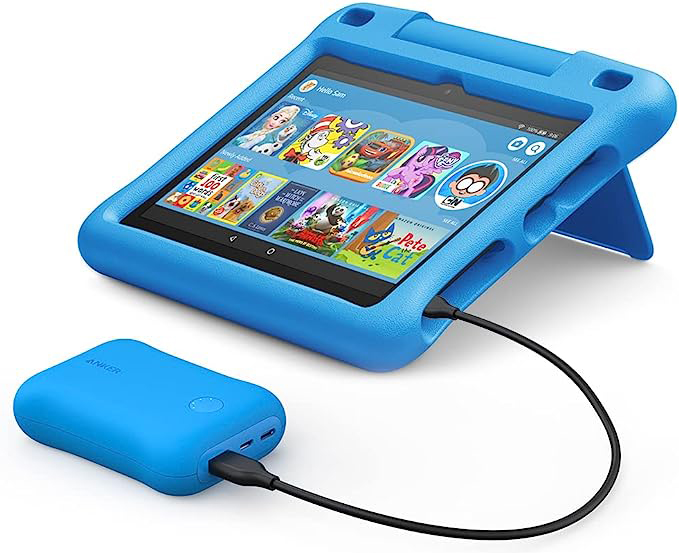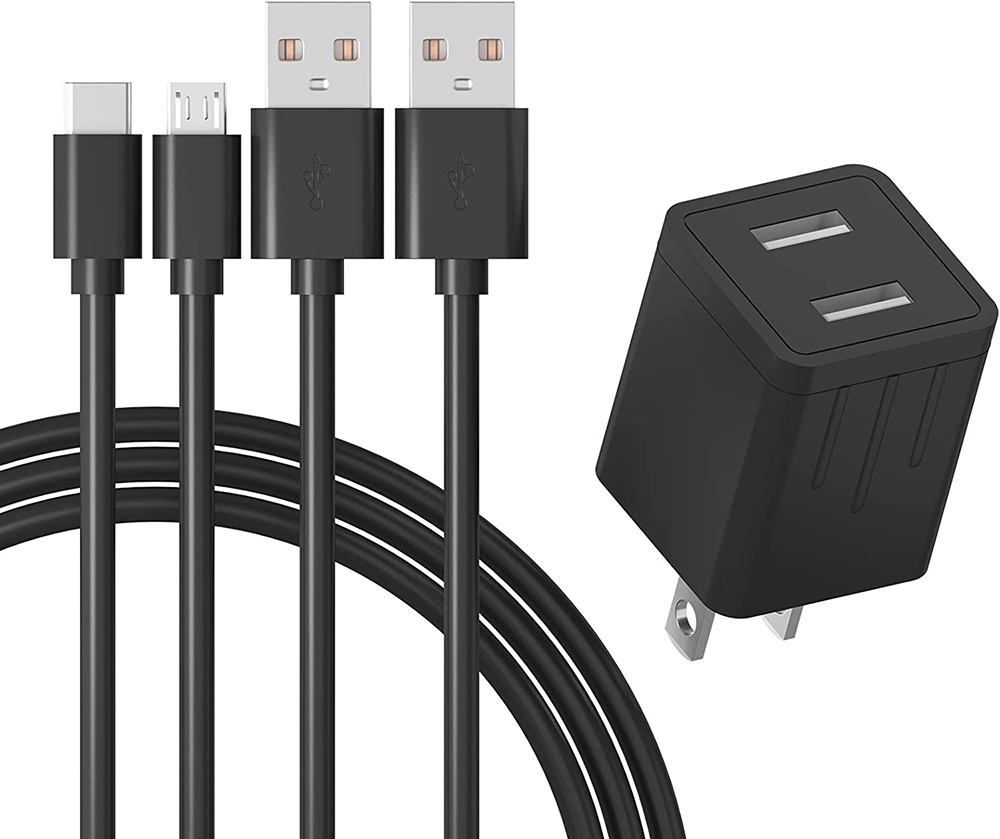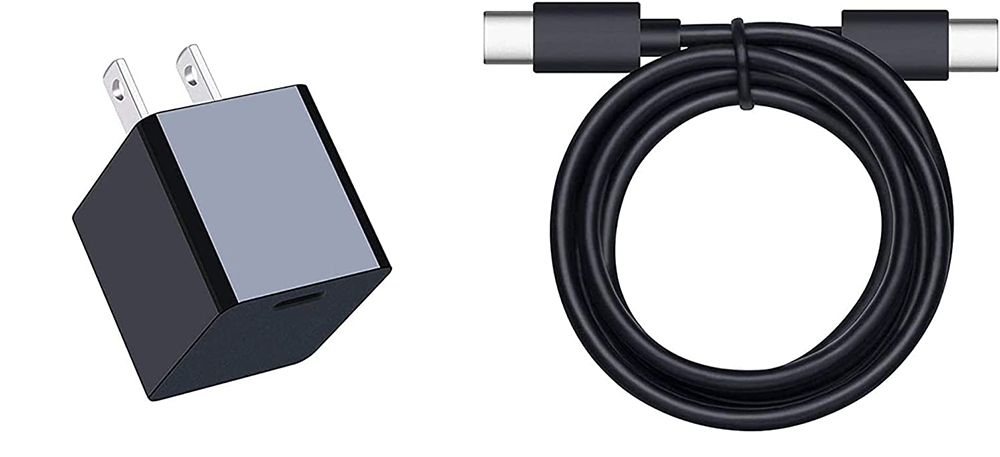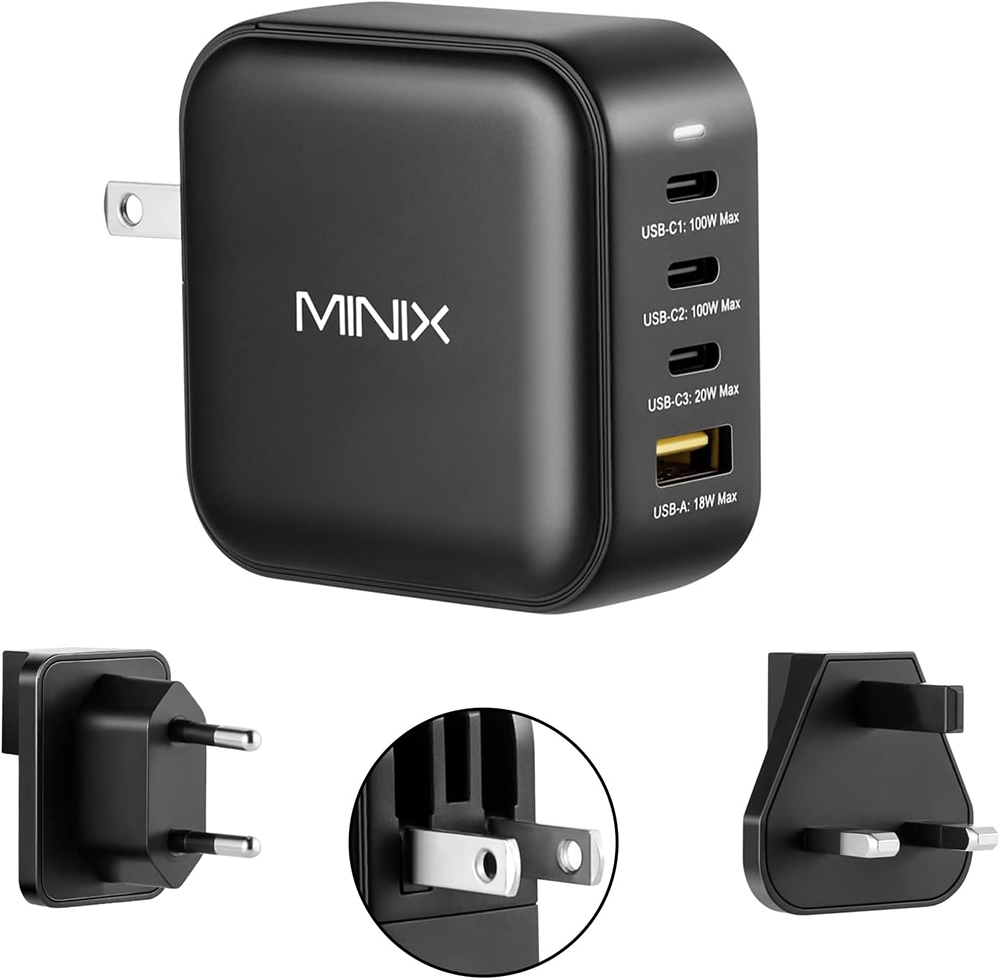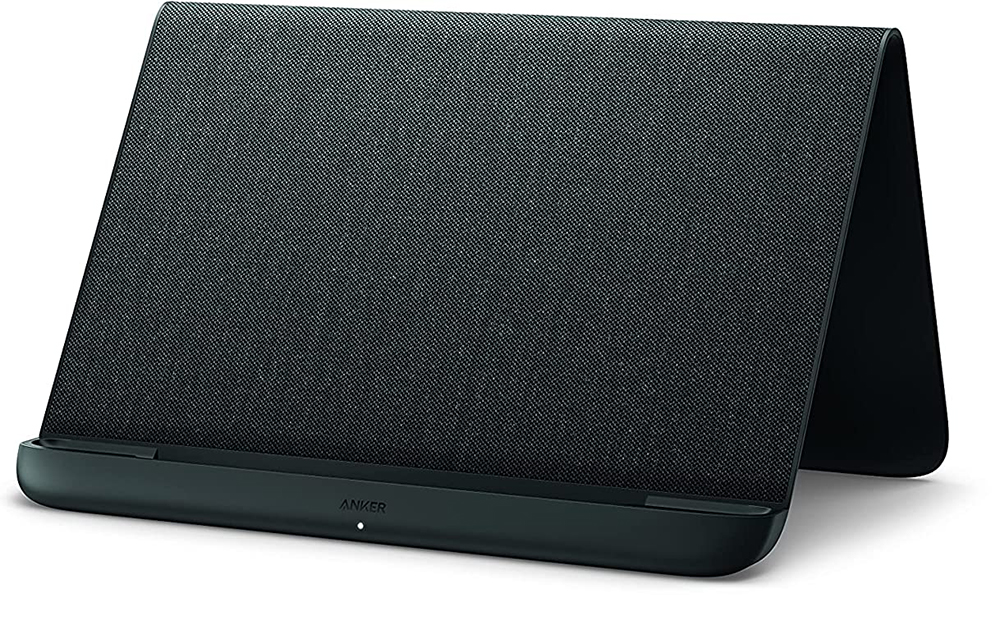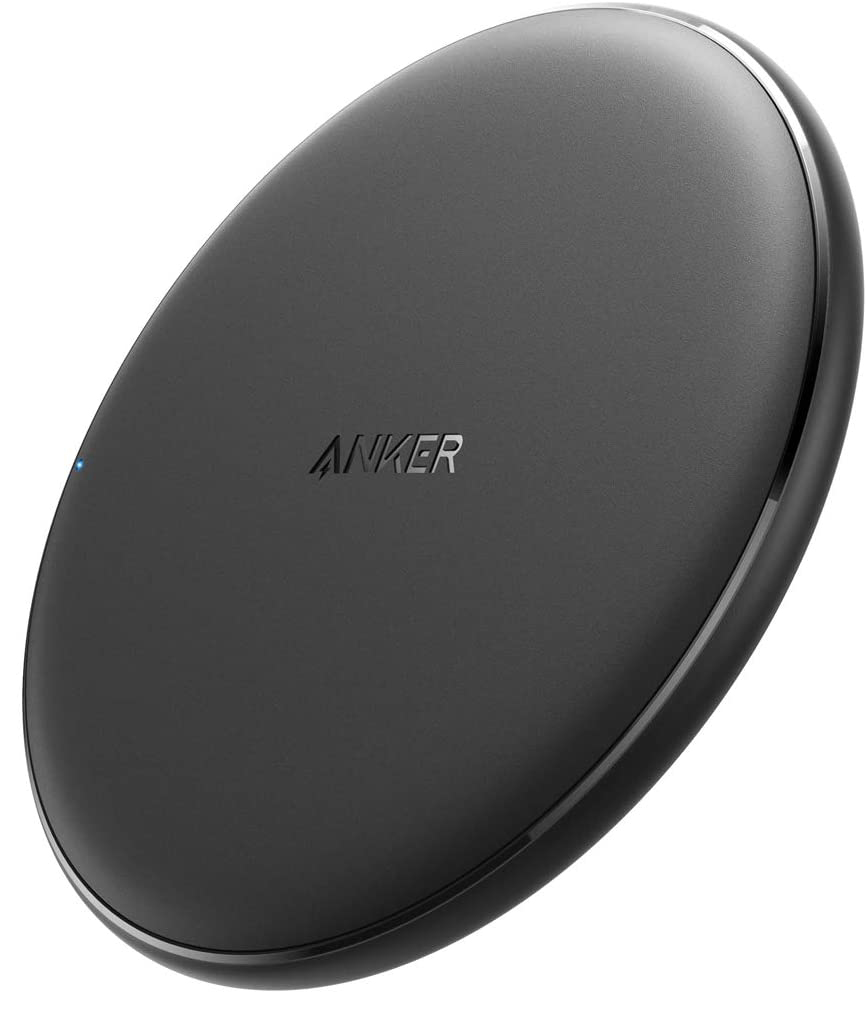Amazon’s Fire Tablets have become some of the most popular mobile devices available. Although Amazon started with a tablet that was basically an electronic reader, the Fire Tablet now has the capability to be your favorite mobile device. To keep your Fire running, charging it is a must. This article will tell you everything you need to know about Fire Tablet charger types.
Fire Tablets 2019 and After
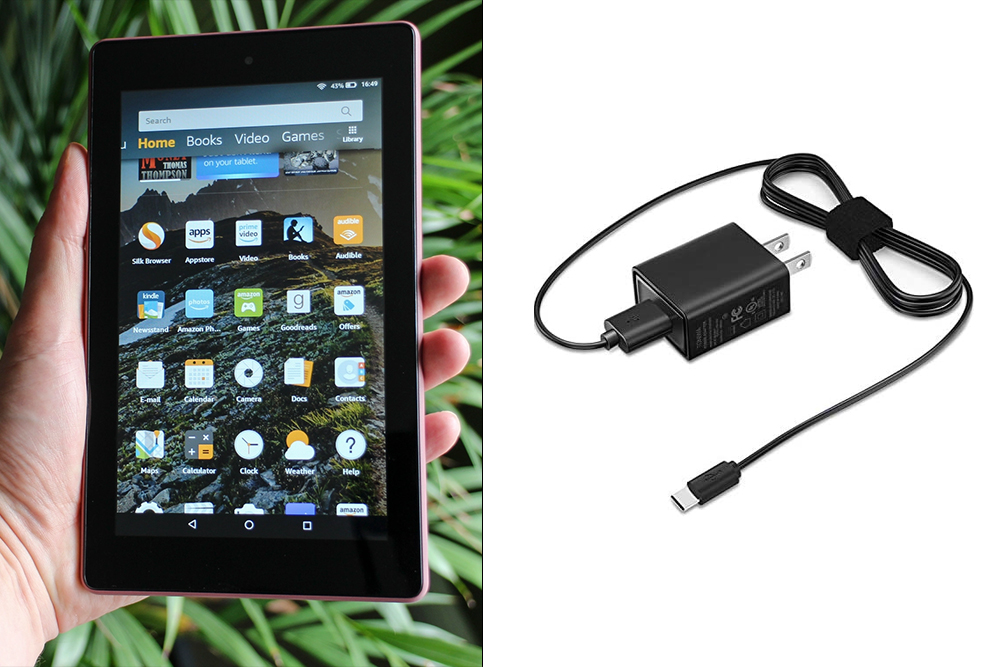
Amazon switched to the USB-C charger with its release of the Amazon Fire HD 10 in 2019. All Fire Tablets since then have used the same USB-C style charger. These include the Amazon Fire HD 8 and the Plus and Kids versions. Also included are the Amazon Fire HD 10, 10 Plus, and 10 Kids Pro versions. An official Amazon charger isn’t necessary, as any USB-C charger will work with these tablets.
Fire Tablets Before 2019

If you’re lucky enough to have a Fire Tablet from before 2019 that still works, it will likely need a micro-USB charger. As previously mentioned, it isn’t necessary to purchase an Amazon official charger. Any micro-USB charger will charge your device. In the modern world, the charging power of these cords will feel lethargic, but it will get the job done.
USB-C vs. Micro-USB
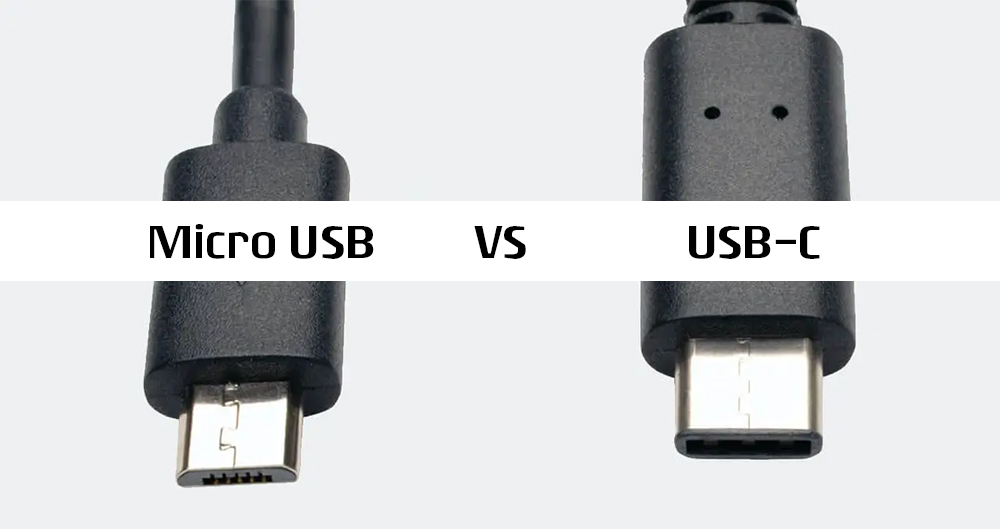
Why did Amazon upgrade to the USB-C with the newer Fire Tablets, and what’s the difference? The micro-USB is an older style connector charger similar to the ancient USB-A at 12W. The USB-C charges much faster as an 18W cord, 10 Gbps, and, depending on the device, can cut the charging time by 30%.
Another benefit to the USB-C is that there is no “right-side up” to the plug. Everyone has experienced the pain of trying to put a USB-A in the right way, turning it over and over to no avail. But the symmetrical USB-C can connect no matter which way you plug it into your device.
A third perk to using USB-C is that most modern technology uses this kind of connector. This means if you keep a few USB-C cables around, you can probably charge most of the devices in your home with them. For many people, it will be nice to streamline and only have one kind of cord to track.
Wireless Charging

Fortunately, newer Fire Tablets also have the capability to charge wirelessly. Amazon says that any Qi-certified charging device will be compatible with the Fire HD 10 Plus and following tablets. Amazon also partnered with Anker to release a wireless dock specifically made for the Fire Tablet. Check the manufacturer’s instructions for your tablet to see if yours has wireless charging capabilities.
The Best Micro-USB Chargers
If you’re using an old device with a micro-USB charger, you need all the speed you can get. Here is a list of the best micro-USB chargers that let you operate as quickly as possible with an outdated charging device.
- Kids Portable Charger by Amazon. This is a great kid-friendly option that is tough and also looks cute. The portable charger contains a micro-USB, USB-C, and USB-A slot for whatever kind of connection you need. The charger is covered in BPA-free silicon for protection which also makes it easy to clean.

- Dericam 5V 1A Micro-USB wall charger, Android. It’s simple and doesn’t have a lot of frills. It doesn’t cost much and has great user reviews for a micro-USB cord. It has circuitry to protect against overheating and automatically stops charging when your device’s battery is full.

It’s important to know that micro-USB will only deliver a regular charging speed no matter what kind of cable you use to connect it. Because of this, it doesn’t matter what connection you use to your wall charger as long as the connection to your device is micro-USB.
The Best USB-C Chargers
As the USB-C connection grows in popularity, finding USB-C chargers has become increasingly easy. Any of the chargers will power up your device, but there are a few that come highly recommended by those in the know.
- SGUUVAY 6 Ft Fire Tablet Charger. This recommendation comes straight from Amazon’s website as one of the best USB-C Fire Tablet chargers available. It’s not expensive, and it comes with a USB-C and a micro-UBC charging port so that all of your Amazon devices can power back up together.

- Made for Amazon 15W Type-C Wall Charger with USB-C Cable. Also suggested by Amazon, this cord and plug are especially recommended for the latest Fire Tablet model. Supreme in speed, it can charge smartphones from 0% to 50% in 30 minutes (roughly, depending on the device). It also claims to be quite a bit faster than any of the in-box chargers that come with the devices.

- MINIX NEO P3 100W Turbo 4-Ports Fast Charger. Users report really liking this charger for their USB-C and USB-A devices. It’s 3 USB-C ports, and one extra USB-A port means you can charge your new devices as well as old ones, all at the same time. It supports any PD & QC charging compatible devices (except Samsung S22).

- Nekteck USB-C Charger with Foldable Plug. Preferred by several technology sites and high in user ratings, both the plug and the cord in this bundle are high-performance. Sold together, it’s a steal of a deal for a reliable product.

As previously mentioned, using a USB-C to USB-C connector between your device and the wall plug will maximize the speed at which your device charges.
The Best Wireless Fire Tablet Chargers
Wireless charging keeps you free and clear of pesky cords and length limitations. Most devices with the ability to charge wirelessly can use the same charger, with no need to figure out annoying and time-consuming plug arrangements. Check out these highly rated wireless chargers for your Fire Tablet.
- Made for Amazon, Wireless Charging Dock for Fire HD 10 Plus (11th Generation Only). This Anker and Amazon collaboration is the best way to charge your Fire Tablet if you have the 11th generation Fire HD 10 Plus. No need for tangled-up cords preventing your charging area from looking nice and clean. User ratings are good, and the practicality is perfect.

- Anker 10W Max Wireless Charger (Pad). Also by Anker, this wireless charging pad is Qi-certified and can charge any Fire Tablet that has wireless charging capabilities. It has universal compatibility among all device brands.

Not all Fire Tablets come equipped with wireless charging, but you can use third-party Qi-enabling devices to add that feature to some of the newer tablets. Be sure to check all of your devices at home to see which ones could benefit from wireless charging.
A Note About Cords
Don’t forget that it’s not only the plug that matters but also the cord you’re using to carry the charge to your device. Older styles like the USB-A will slow down the charging process by using this kind of connection to your charging block. Cords that look the same don’t always perform the same. It’s important to value the quality of the cords that you purchase.
Fire Tablet Charger
For now, Amazon Fire Tablets can be charged by a USB-C charging cord. Or you can ditch the cord and try wireless charging! The only exceptions are the older style tablets, released prior to 2019, which run on a micro-USB style charging cord. Reliability and speedy charge make the USB-C the best option for keeping your Fire Tablet running optimally.
In the future, it’s likely we’ll see charging cords evolve to an even better design. But for now, USB-C is the Fire Tablet answer. Did you use our article to choose a charger for your Fire Tablet? Let us know in the comments below!
Disclaimer: Some pages on this site may include an affiliate link. This does not effect our editorial in any way.
